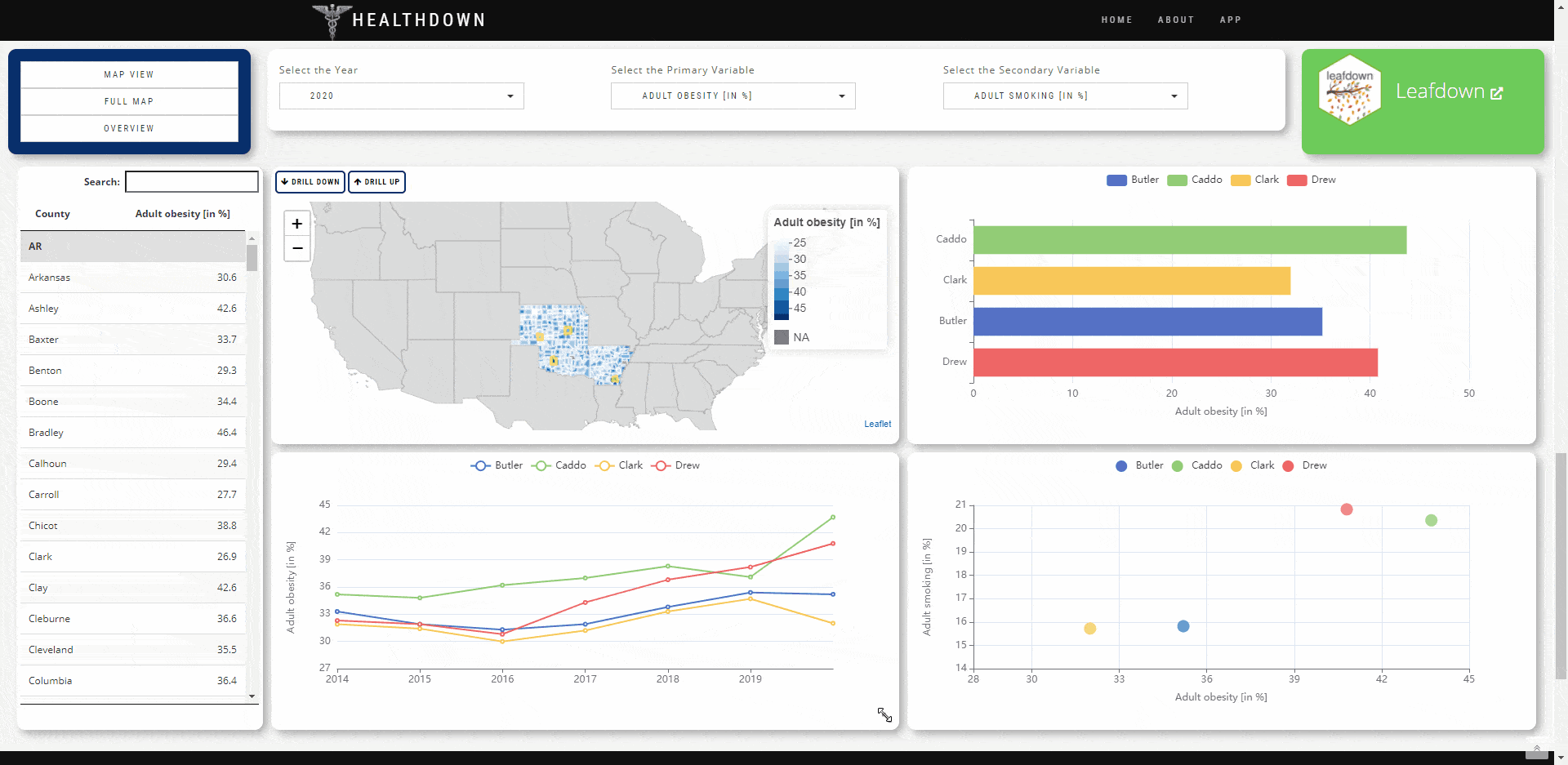The gridstackeR package allows users to easily create Dashboards with gridstack.js functionalities
‘gridstack.js is […] designed to help developers create beautiful draggable, resizable, responsive […] layouts with just a few lines of code’
You can install the development version from GitHub with:
# install.packages("devtools")
devtools::install_github("petergandenberger/gridstackeR")In the example below we add gridstackeR to the basic shiny application ‘Old Faithful Geyser’. The plot can now be dynamically resized and the position for both, the plot and the slider, can be changed using simple drag&drop.
library(shiny)
library(gridstackeR)
ui <- fluidPage(
grid_stack(
grid_stack_item(
h = 4, w = 4, id = "plot_container",
plotOutput("plot", height = "auto")
),
grid_stack_item(
h = 2, w = 3, no_resize = TRUE, id = "slider",
sliderInput("slider", "Slider input:", 1, 100, 50)
)
)
)
server <- function(input, output) {
output$plot <- renderPlot({
x <- faithful$waiting
bins <- seq(min(x), max(x), length.out = input$slider + 1)
hist(
x, breaks = bins, col = "#75AADB", border = "white",
xlab = "Waiting time to next eruption (in mins)",
main = "Histogram of waiting times"
)
},
# set the height according to the container height (minus the margins)
height = function() {
min_height <- 150
margin <- 20
max(input$plot_container_height - margin, min_height)
})
}
shinyApp(ui, server)In the ui.R file, create a grid using grid_stack(...) and place
grid-stack-items inside using grid_stack_item(...).
Specify options like height, width, x-, y-position as well. Check the gridstack.js documentation for a full list of options.
The ui.R file might contain something like the following.
grid_stack(
grid_stack_item(
h = 4, w = 4, id = "plot_container",
plotOutput("plot", height = "auto")
)
)Every grid_stack_item has four reactive inputs that can be used to
observe changes made to the element.
<grid_stack_item-id>_widthreturns the width of the item in pixels<grid_stack_item-id>_heightreturns the height of the item in pixels<grid_stack_item-id>_wreturns the width of the item in number of columns<grid_stack_item-id>_hreturns the height of the item in number of rows<grid_stack_item-id>_xreturns the x-position of the item in number of columns from the left<grid_stack_item-id>_yreturns the y-position of the item in number of rows from the top
E.g. to observe the width (in pixels) of the grid_stack_item created in
the section above use observe({print(input$plot_container_width)}).
This can be used to set the width of a plot manually.
Elements inside grid-stack-item might not change their height
automatically.
The following example shows how the height of the plot can be set
dynamically using the <id>_height callback
Note: the plot_container_height references the height of the
id = "plot_container" created in the ui.R example above.
output$plot <- renderPlot({
x <- faithful$waiting
bins <- seq(min(x), max(x), length.out = input$slider + 1)
hist(
x, breaks = bins, col = "#75AADB", border = "white",
xlab = "Waiting time to next eruption (in mins)",
main = "Histogram of waiting times"
)
},
# set the height according to the container height (minus the margins)
height = function() {
min_height <- 150
margin <- 20
max(input$plot_container_height - margin, min_height)
}
)Setting the height for DT::dataTableOutput
The height for a DT::dataTableOutput can be set as in the following
example.
ui.R
grid_stack_item(
w = 4, h = 10, x = 0, y = 0, id = "c_table",
DT::dataTableOutput("mytable")
)server.R
output$mytable <- DT::renderDataTable({
DT::datatable(mtcars, options = list(
# set the height according to the container height (minus the margins)
scrollY = max(input$c_table_height, 200) - 110, paging = FALSE
)
)
})Setting the height for echarts4r
The height for a echarts4r::echarts4rOutput can easily be set using
the height="100%" option.
ui.R
grid_stack_item(
w = 5, h = 5, x = 7, y = 0, id = "c_plot",
echarts4rOutput(outputId = "plot", height = "100%")
)